The Last Taxi to Ramallah
PeriBlog IX: History and culture collide in Palestine’s capital city
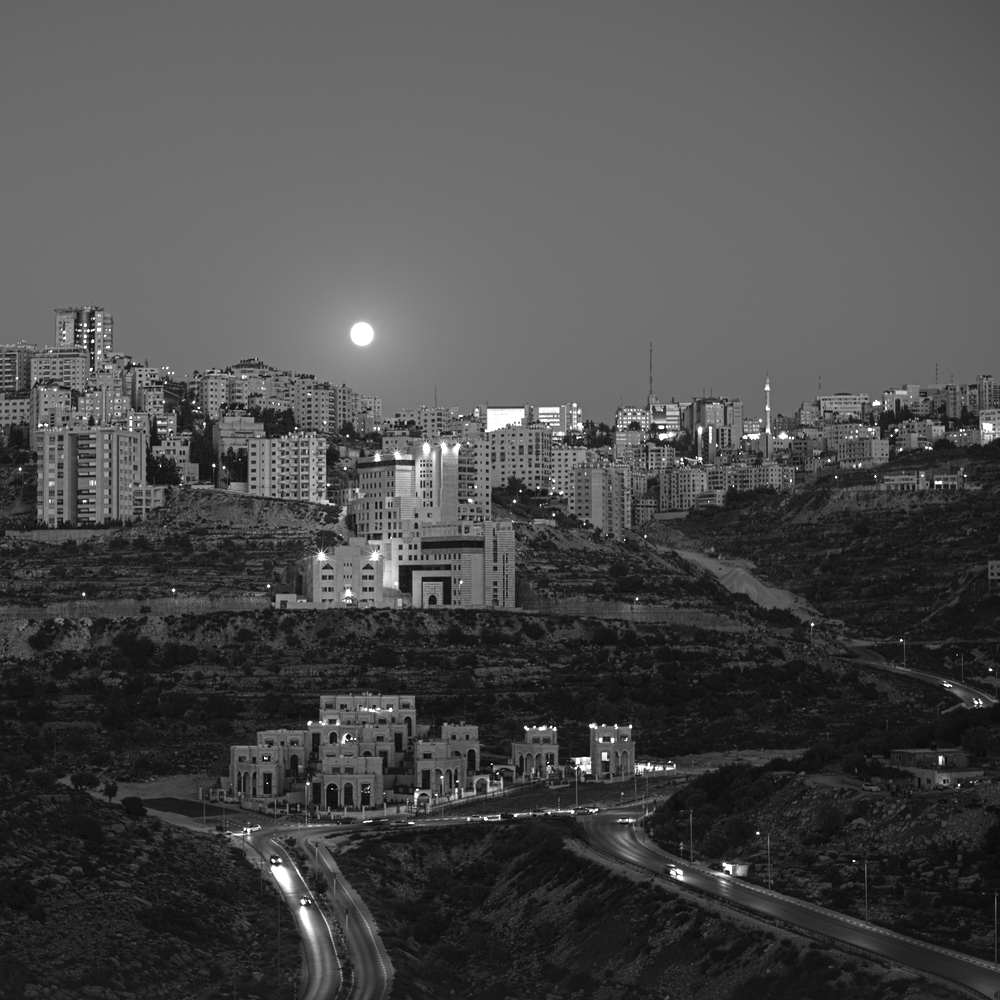
Moonrise over Ramallah, Palestine
The muezzins began at 4:25 a.m. our first morning in Palestine. Green floodlights lit the minarets on three mosques across the Wadi al Dilb. Male voices, amplified by an encircling ring of loudspeakers, scaled the notes of ancient prayers, seducing the faithful from their sleep.
It is a haunting, beautiful sound; you can smell a flint-sparked desert wind blowing through the tones. The competing muezzins sing from the same text, but they begin at slightly different moments, and their voices combine in an ethereal counterpoint. Rather than a discordant noise, the different threads blend seamlessly, discovering inadvertent harmonies like a well-rehearsed jazz choir.
This is not my first visit to an Islamic land; I have suffered the klaxon lash of muezzins in other countries. I have covered my ears as bad singers tortured listeners with grating voices, amplified and horrified through pounded-tin loudspeakers.
The Ramallah refrain is like nothing I have ever heard before, a series of celestial tones.
There is only one proper response: close the laptop, turn off the phone, and sit in the dark listening until the service concludes. The performance deserves full attention.
This is Fajr, the first of Islam’s five daily times of prayer. Traditionally, Fajr begins when the first light of dawn softens the eastern horizon. I can’t see any light from where I sit on my balcony—apart from the electric outlines of the homes and multistory apartment complexes on the other side of the valley.
The Weather Underground states that astronomical twilight—the moment when the geometric center of the sun lays 18 degrees beneath the horizon—is scheduled for 4:46 a.m. It feels like the muezzins are early.
Or just enthusiastic.
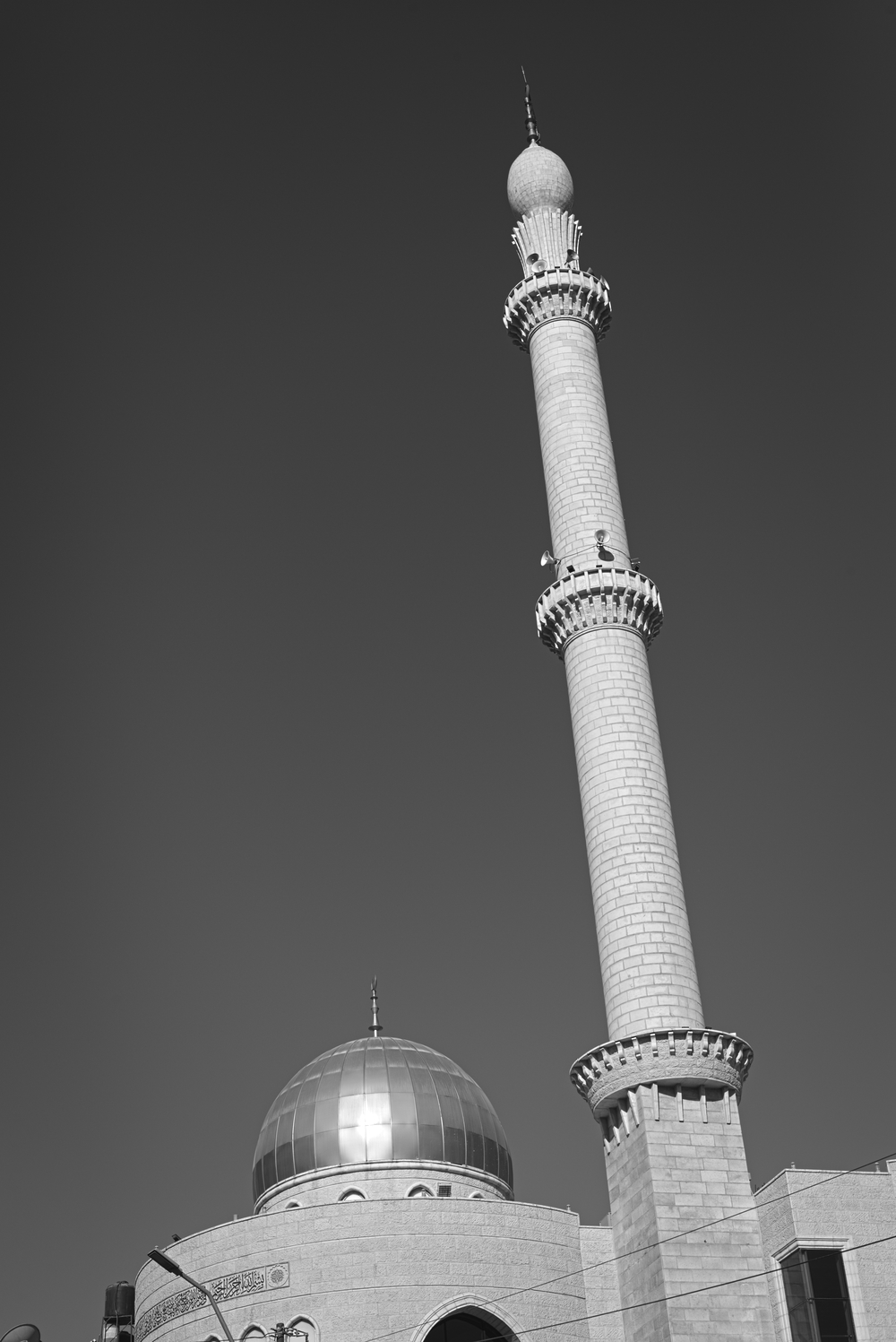
Ein Musbah Mosque, helping fill my mornings with plainsong
Our new apartment stands on the tail of a comma, at the end of a long ridge that curves and drops northwest from the center of the city. A steep plunging bowl—the Wadi al Dilb—lined with broken stone walls and olive trees, separates us from the city center. It’s an uphill slog, a thirty minute, thigh-tightening, climb to downtown Ramallah.
Hello cardiac fitness, here we come.
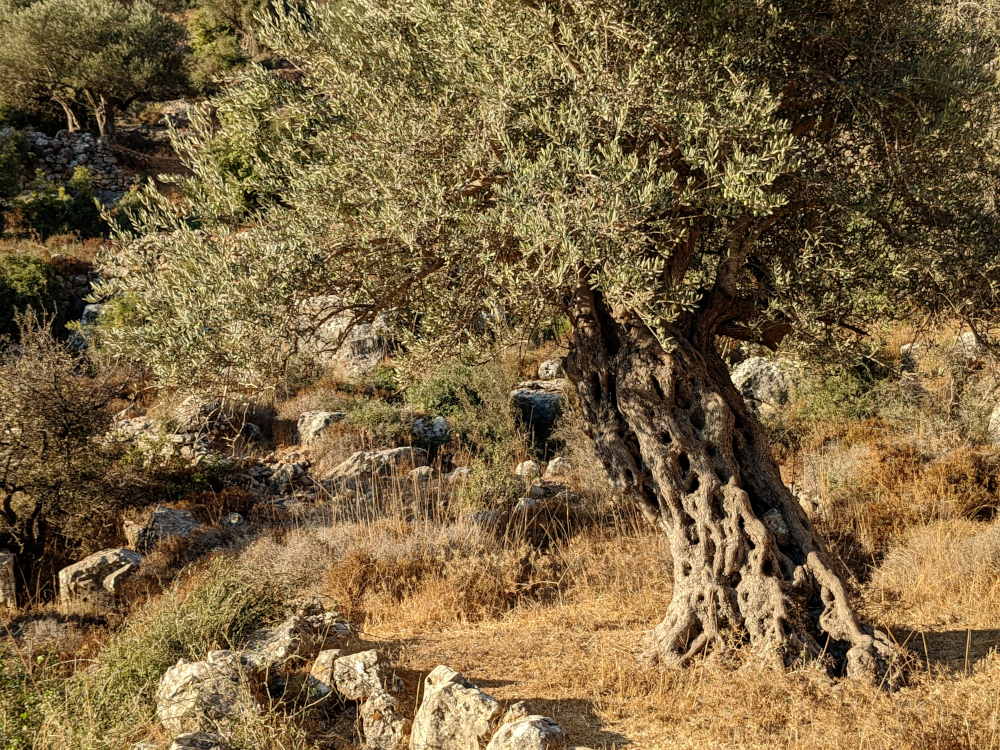
Broken stones walls and ancient olive trees stud the valley
The two roads at the bottom of the wadi carry an inordinate amount of automobile traffic; there is a fairly constant stream of automobiles passing below. On the other hand, the view is spectacular. In the evening we look across the bowl to downtown Ramallah, watching the lights turn on in the newer buildings that scale the flanks of the hills. It might not be a million dollar view, but it would certainly be worth a large bag of New Israeli Shekels.
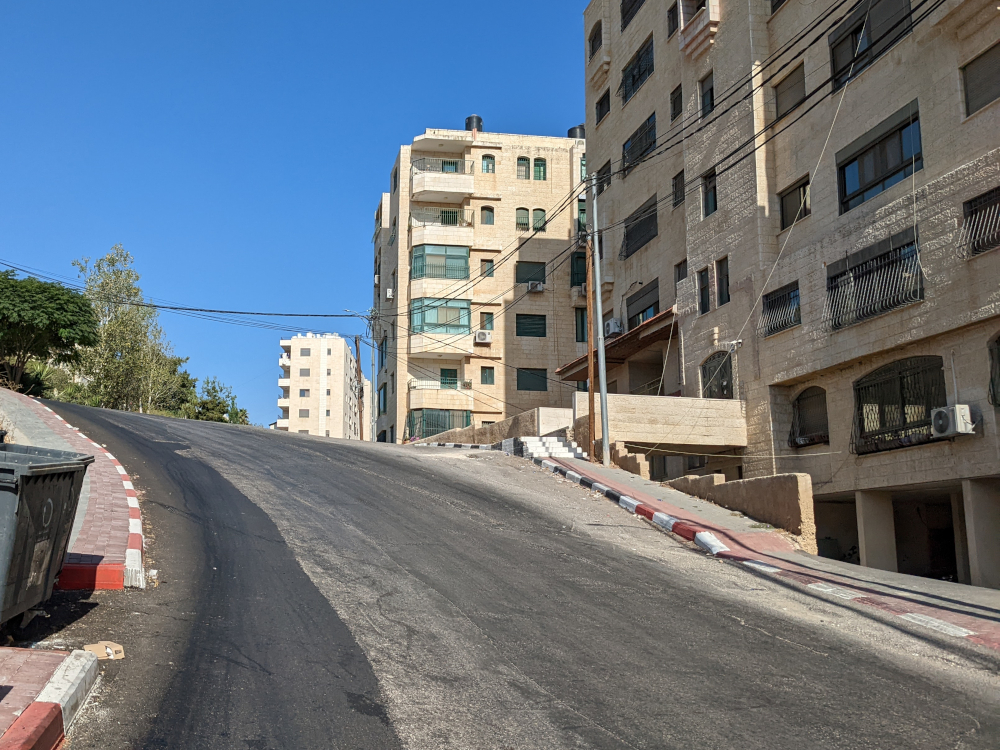
It is all uphill from here
Ramallah is a newcomer among Holy Land towns. Jericho, sixteen miles to the east, has been inhabited for nearly 11,000 years; Jerusalem can probably claim 5,000 years; Ramallah, although it has some stonework that might date back to the Crusades, wasn’t officially established until the sixteenth century. Arabic Christians built the first village, and shortly thereafter it was folded into the Ottoman Empire.
Growth came slowly. A British survey from the late-nineteenth century described it as “A large Christian village, of well-built stone houses, standing on a high ridge with a view on the west extending to the sea.” Twenty-five percent of its residents were Roman Catholic and the rest were Orthodox Greeks. A Greek church, Latin convent, and Protestant school met the educational and spiritual needs of the village.
The village continued to slumber for nearly another century. Then, during the fighting of the 1948 Arab-Israeli War, the city was captured by Jordan. Nineteen years later, during the Six Day War, Israel expelled the Jordanians, capturing Ramallah and the rest of the West Bank (the land on the western shore of the Jordan River).
Today Ramallah is the region’s major city as well as the seat of government for the Palestinian Authority. It has grown rapidly since 1967, although it is surprisingly difficult to establish how many people currently make their homes here. Ask a local about the population, and you will hear estimates that span a range of 27,000 to 500,000.
Christianity is no longer the dominant religion. Since 1967, most Christians have left, and today the population is overwhelmingly Muslim. Nevertheless, Ramallah retains a reputation for liberality. Many women have forsaken their traditional headscarves, and it is possible to purchase alcohol in some restaurants and liquor stores.
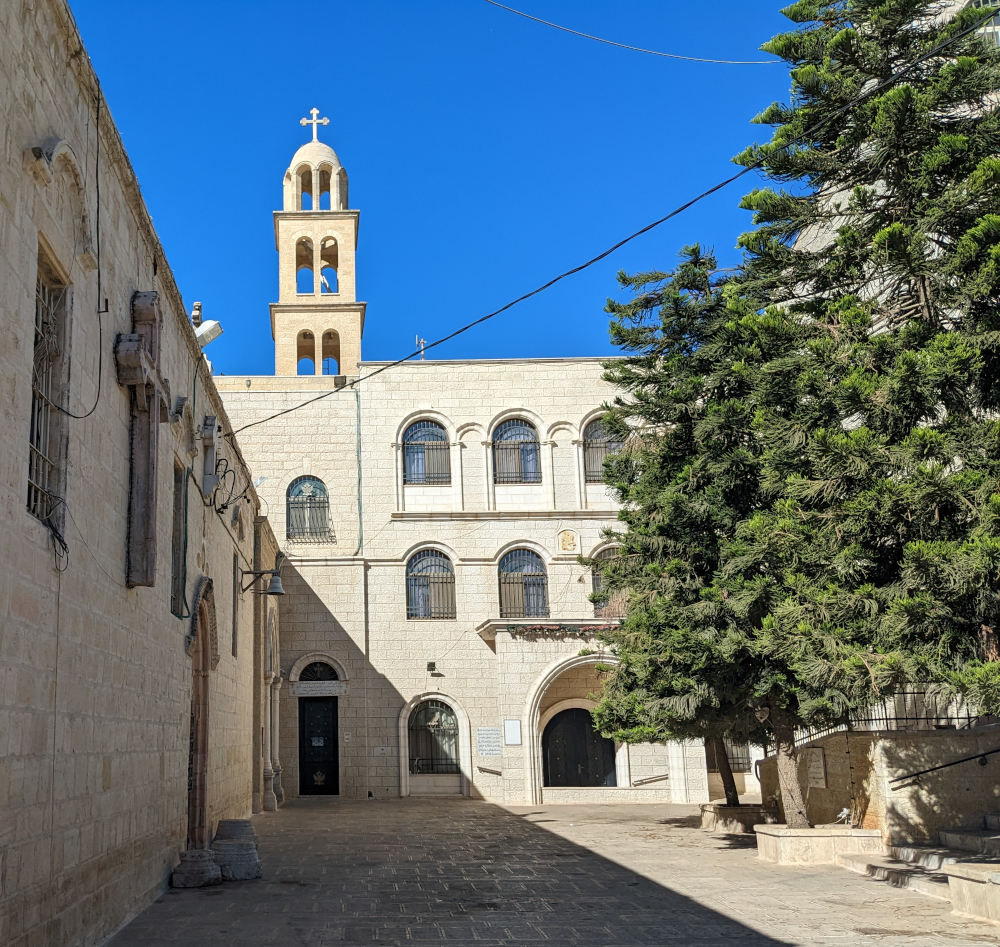
The Church of the Transfiguration, one of the few churches still active in Ramallah
On the road from Palestine I noticed large double stacks of coiled barbed wire encircling the boundaries of towns and villages. Rolling through the border checkpoint I saw a sign inscribed in three languages—Hebrew, Arabic, and English. We were entering “Zone A,” the region controlled by the Palestinian government. “Citizens of Israel are forbidden entry,” announced the sign. “Danger of death. It is illegal for Israelis to enter.”
Dangerous Palestine. When we announced our intention to spend a year here, the most common question was about the danger.
After two weeks I am happy to report that the greatest danger we face is overeating. The food is terrific and every Palestinian we meet wants to have dinner with us, meet us for coffee, or buy us a traditional breakfast.
It’s a bit overwhelming for a reclusive, introverted writer/photographer. I’ve had more social contact in two weeks than I had in the last two years in America. Everyone wants to meet us—and feed us.
Thank goodness for the hill workout.
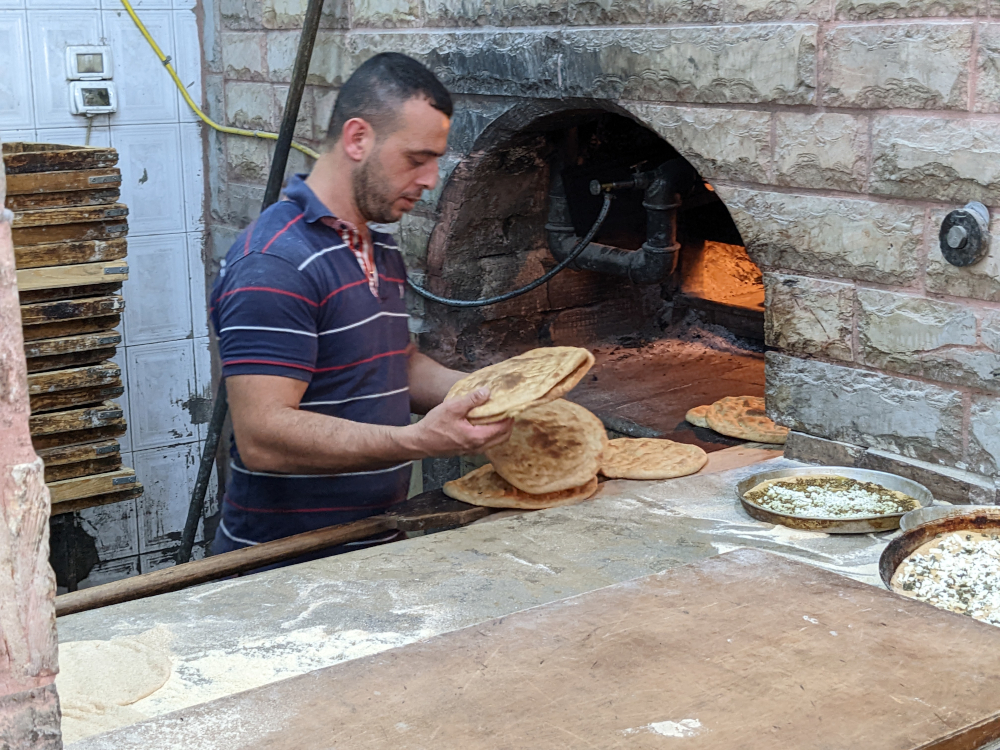
Flatbread, fresh from the oven
We are in the early days of acclimating and adjusting to our new environment. It hasn’t been completely stress-free, but on the great balance sheet of life, Palestine stands in the black. We’re happy to be here and looking forward to the luxury of a year in which we can explore, make friends, and learn to appreciate this marvelous country.
Stay tuned for more pithy observations about our new home in the weeks to come.
If you are enjoying this series, why not subscribe to Richard's monthly newsletter, What's New in Old News? The Peripatetic Historian is on the road, roaming the world and compiling fresh adventures. Don't miss out. Click here to join the legions of above-average readers who have already subscribed.